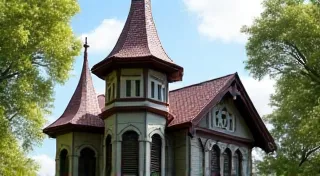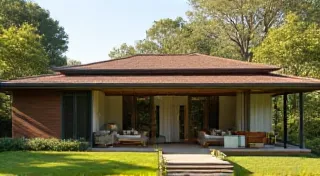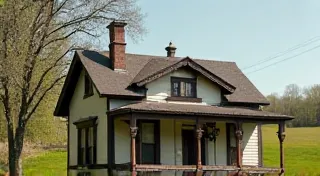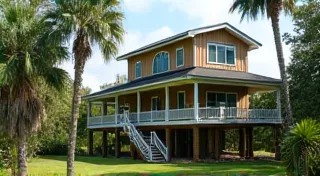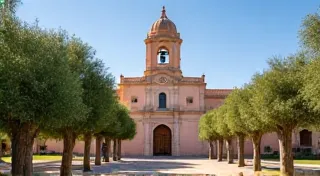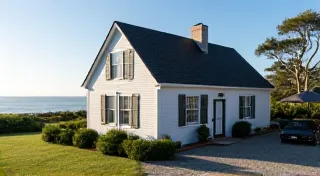Prairie School Architecture: Horizontal Lines and Organic Forms
The Prairie School movement, flourishing primarily in the Midwestern United States from the early 20th century (roughly 1900-1920), represents a uniquely American architectural style deeply rooted in its landscape and a rejection of European traditions. More than just a design aesthetic, it was a philosophy aiming for a harmonious integration of building and environment. This focus on regionalism and adaptation is a fascinating parallel to architectural styles found elsewhere, such as the charming and adaptable Arkansas Folk Victorian homes found in the Ozarks, which similarly reflect their environment.
The Origins & Philosophy
Born out of a desire to create architecture that reflected the vast, flat prairies of the Midwest, the Prairie School moved away from the verticality and ornamentation of Victorian architecture. Instead, it embraced horizontality, echoing the expansive horizon and emphasizing the relationship between the building and the surrounding natural world. Early practitioners felt the existing architectural styles felt foreign and out of place on the American plains. This rejection of established norms and a desire to create something uniquely suited to its location resonates with other regionally specific architectural expressions – for example, the way Pueblo Revival architecture in the Southwest draws inspiration from ancestral traditions and the surrounding desert landscape.
Frank Lloyd Wright: The Guiding Force
While not solely responsible for the movement, Frank Lloyd Wright is undeniably its most celebrated figure and its primary driving force. His "organic architecture" concept—the belief that a building should grow from its site and be harmoniously integrated with it—became the movement’s core tenet. Wright's early homes in Oak Park, Illinois, like the Robie House, perfectly exemplified these principles and served as models for other architects. The emphasis on natural materials and blending with the landscape speaks to a broader architectural impulse – a desire to create homes that are not just structures, but extensions of the environment itself.
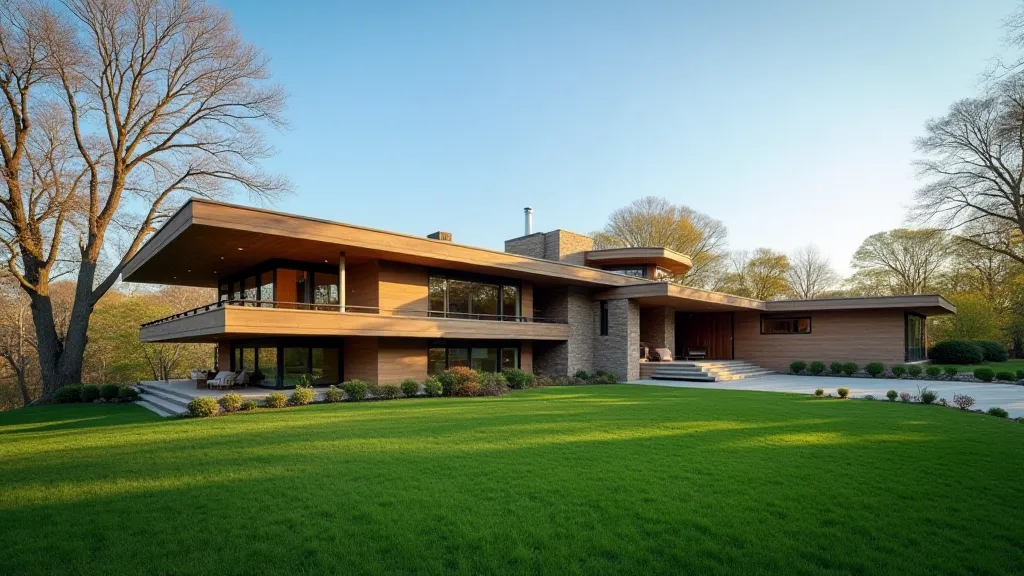
Key Characteristics of Prairie School Architecture
Several defining features characterize Prairie School buildings:
- Horizontal Emphasis: Low-pitched roofs with wide, overhanging eaves are a signature element, extending outwards to create shaded porches and verandas. The low profile is crucial to the overall aesthetic, allowing the building to sit comfortably within the landscape, a characteristic that mirrors the way homes were adapted to fit their environments across different regions.
- Open Floor Plans: Interior spaces flow seamlessly into one another, fostering a sense of openness and connection. Walls are minimized, and rooms blend together. This fluidity of space was a radical departure from the compartmentalized Victorian homes that preceded them.
- Natural Materials: Emphasis is placed on utilizing materials sourced from the surrounding environment – wood, brick, stone, and stucco were commonly employed. The colors and textures are often dictated by the local geology, creating a subtle harmony between the building and its surroundings.
- Integration with Landscape: Buildings are carefully sited to complement the natural topography and vegetation, blurring the line between inside and outside. This deliberate integration speaks to a deeper respect for the natural world.
- Ribbon Windows: Long, continuous bands of windows, often grouped in rows, provide ample natural light and expansive views of the landscape. The ribbons of glass visually connect the interior to the exterior.
- Geometric Ornamentation: While ornamentation is minimal compared to earlier styles, geometric motifs, often inspired by nature, are incorporated into screens, door panels, and other details. This style presents a contrasting aesthetic compared to the ornate detailing common in styles such as Queen Anne architecture of the Pacific Northwest.
Prominent Features & Design Elements
The use of overhanging eaves, often extending several feet beyond the walls, serves a practical purpose – providing shade and protection from the elements – and contributes significantly to the building’s distinctive horizontal character. The integration of art glass, often featuring abstract geometric patterns, is another notable element, adding visual interest and filtering natural light. The careful consideration of proportion and balance contributes to the overall sense of harmony and serenity. The way light interacts with the building and the landscape was clearly paramount for Prairie School architects.
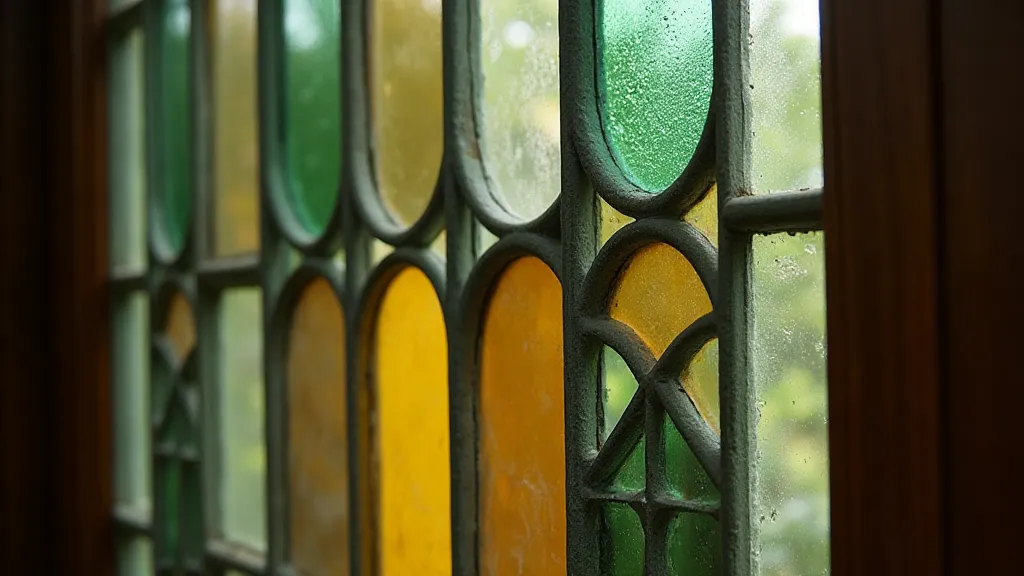
Beyond Frank Lloyd Wright
While Frank Lloyd Wright set the tone, other architects significantly contributed to the Prairie School movement. Notable figures include Marion Mahony Griffin, whose designs often incorporated intricate floral patterns and a nuanced understanding of color, John Van Osdel, known for his more restrained and classical interpretations of the Prairie style, and William Drummond, who brought a unique blend of European influences to his Prairie School creations. The influence of various cultures and approaches resulted in a diverse range of interpretations of the core principles.
The Cultural Context & Wider Architectural Landscape
Understanding the Prairie School requires considering the broader cultural and architectural context of the time. The early 20th century was a period of rapid industrialization and urbanization in the United States, leading to a desire for new forms of housing and design that reflected the changing landscape and values. The rejection of European architectural traditions was part of a larger movement to assert American identity and create a distinctly American architectural style. In the South, a similar desire to develop regional styles resulted in the emergence of architectural forms like those seen in French Colonial architecture in Louisiana, blending European techniques with local building materials and traditions.
Legacy and Influence
The Prairie School movement had a profound influence on subsequent architectural styles, particularly the International Style and Modernism. Its principles of simplicity, functionality, and integration with nature continue to inspire architects today. The emphasis on horizontal lines and open spaces can be seen in countless contemporary buildings, demonstrating the enduring relevance of the Prairie School aesthetic. The movement’s impact extends beyond the purely visual, influencing the way we think about the relationship between buildings and their environment. Though relatively short-lived as a distinct movement, its impact on American architecture remains undeniable, reminding us of the beauty and harmony that can be achieved when design is thoughtfully connected to its environment.
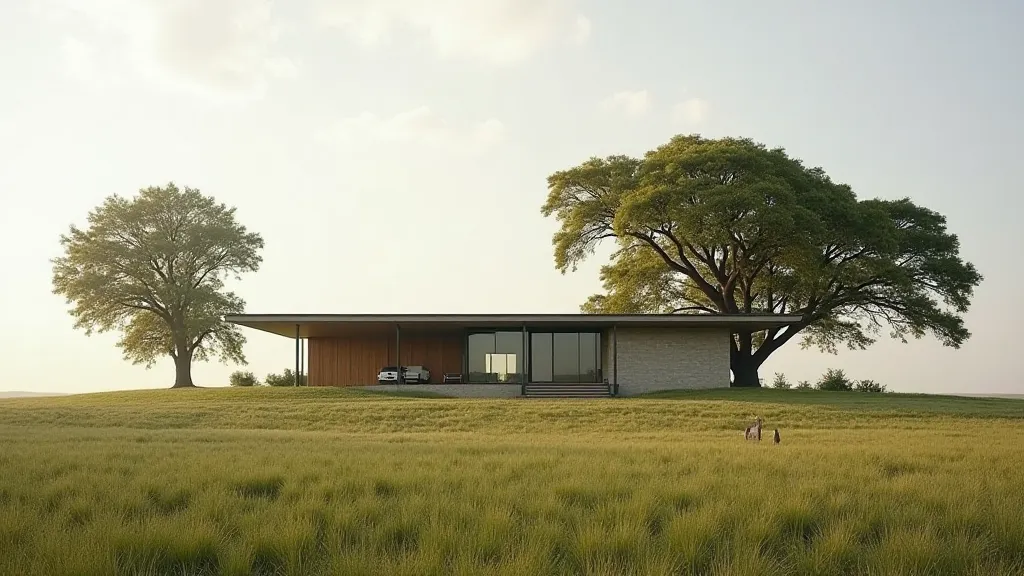
Contemporary Echoes & Future Directions
While the Prairie School as a formal movement ended decades ago, its principles continue to resonate in contemporary architecture. Sustainable design practices, which emphasize energy efficiency and the use of local materials, are deeply rooted in the Prairie School’s commitment to integrating buildings with their environment. The desire for open floor plans and a connection to nature remains a priority for many homeowners and architects. Furthermore, understanding the history of architectural responses to regional landscapes – like the ways building practices adapted to the harsh conditions of the prairie – offers valuable lessons for addressing contemporary environmental challenges.
